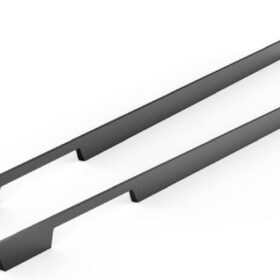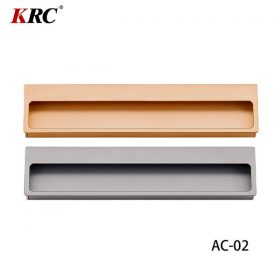The Environmental Impact of Choosing Cabinet Pull Handles
When it comes to home renovation, every decision we make can have an environmental impact. From the materials we use to the finishes we choose, each decision can contribute to the health of our planet. One often overlooked area is the choice of cabinet pull handles. While they may seem like a minor detail, the environmental impact of different pull handles can vary significantly.
Material Considerations
The material used to make cabinet pull handles is a primary factor in its environmental impact. Some materials, such as plastic, have a high embodied energy and can contribute to greenhouse gas emissions. Plastic pull handles are often produced using fossil fuels, which release carbon dioxide into the atmosphere. Metal pull handles, on the other hand, typically have a lower embodied energy and are more recyclable.
Wood
Wood pull handles are a sustainable choice, as wood is a renewable resource. Wooden pull handles can be sourced from sustainably managed forests, which helps to protect biodiversity and reduce deforestation. However, the environmental impact of wooden pull handles can vary depending on the type of wood used and the manufacturing process.
Plastic
Plastic pull handles are not as environmentally friendly as wood or metal. Plastic is a non-renewable resource that can take centuries to decompose. Plastic pull handles are often produced using fossil fuels, which release greenhouse gases into the atmosphere. Additionally, plastic pull handles can contribute to microplastic pollution, which can harm marine life and ecosystems.
Metal
Metal pull handles are a more sustainable choice than plastic. Metal is a recyclable material that can be reused multiple times. Metal pull handles typically have a lower embodied energy than plastic pull handles. However, the environmental impact of metal pull handles depends on the type of metal used and the manufacturing process.
Production and Transportation
The production and transportation of cabinet pull handles can also have an environmental impact. Pull handles that are produced in factories that use renewable energy sources and energy-efficient practices have a lower environmental impact. Additionally, pull handles that are transported via efficient modes of transportation, such as rail or ship, have a lower carbon footprint.
Packaging
The packaging of cabinet pull handles can also contribute to their environmental impact. Packaging made from recycled materials or biodegradable materials has a lower environmental impact. Additionally, packaging that is designed to minimize waste has a lower environmental impact.
Disposal
When cabinet pull handles reach the end of their useful life, it is important to dispose of them in an environmentally responsible manner. Some pull handles can be recycled, while others may need to be disposed of in a landfill. Choosing pull handles that are recyclable or biodegradable can help to reduce their environmental impact.
Conclusion
The choice of cabinet pull handles can have a significant environmental impact. By considering the material, production, transportation, packaging, and disposal of pull handles, we can make more sustainable choices. Choosing pull handles made from sustainable materials, produced using energy-efficient practices, and packaged in environmentally friendly materials can help to reduce the environmental impact of home renovation.
-
2024-09-14Exploring the Different Types of Modern Closet Door Pulls and Their Applications
-
2024-09-14How Cabinet Door Pull Handles Support High-Traffic Areas
-
2024-09-06Cost-Benefit Analysis of Investing in High-Quality Long Wardrobe Door Handles
-
2024-09-04How Flat Cabinet Handles Enhance Modern Interior Design
-
2024-11-29Top Trends in Modern Kitchen Cabinet Pulls for 2024
-
2024-11-28The Ultimate Guide to Modern Kitchen Cabinet Pulls- Materials, Styles, and Tips
-
2024-11-27Elevate Your Kitchen Design with These Must-Have Modern Cabinet Pulls
-
2024-11-26Sleek and Stylish- The Best Modern Kitchen Cabinet Pulls for a Contemporary Look






